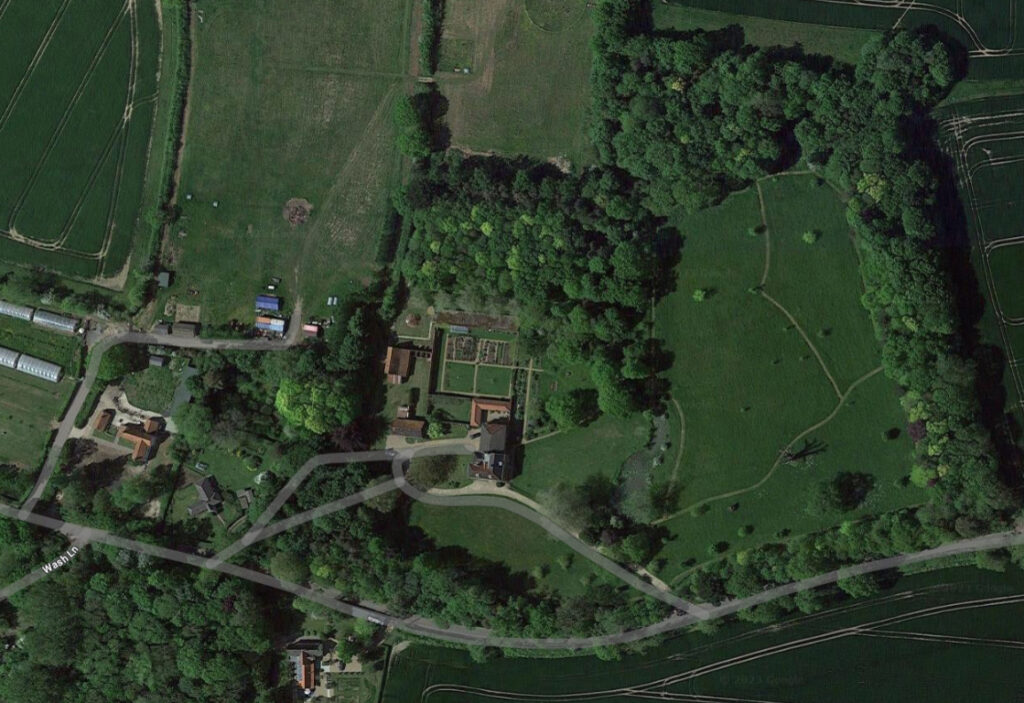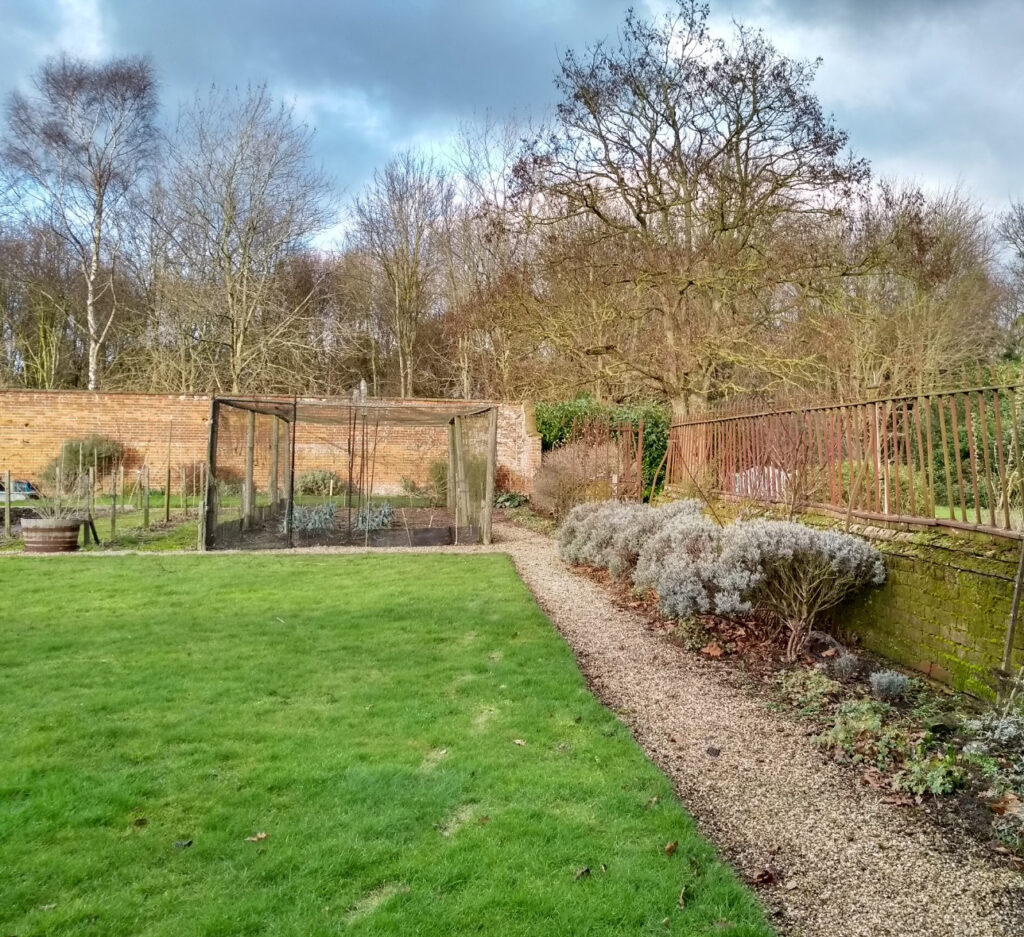Parish: FROSTENDEN
District Council: EAST SUFFOLK (previously Waveney)
TM 473 810
Not open to the public


Only 5km (3mls) from the North Sea at Covehithe and c. 7km (4.5mls) north-west of Southwold, The Grove (Grade II) in Frostenden is a Georgian house, although with earlier origins and later additions. Close to the A12 trunk road between Ipswich and Yarmouth, it was built in this rural parish on the southern edge of the former Frostenden Green and on the eastern boundary of Suffolk’s boulder clay plateau.
It was home to clergymen during the nineteenth century, in particular Revd James Carlos (Carloss) who is believed to have been responsible for the major alterations and additions to the house between 1810 and 1822. He was not rector of Frostenden, that role being carried out by Revd Richard Gooch, the youngest son of Sir Thomas Gooch, Bart. of Benace Hall, but is documented as a resident in the 1830s and described as a clerk and landowner during the 1840s. After his death in 1844, his widow Lydia stayed on at the property and is listed on the 1861 census as still resident. By 1871 it was the home of the Revd Edmund (sometimes referred to as Edward) Lovegrove Hickling, who is documented as a private tutor and clergyman ‘without care of souls’, and his young family. He became rector of Frostenden in 1890. After his death at The Grove in 1912, it stayed as the Hickling family home until the mid-twentieth century, since when it has changed hands on a number of occasions.
The 1838 tithe apportionment lists the Revd James Carlos as owning neighbouring Grove Farm to the west and some fields around the house. The accompanying map depicts the outline, garden layout and paths at the property, which were most likely developed at the same time as Revd Carlos’s additions to the house. To the front (south) of the house, a shrubbery gave privacy from Gough’s Farm on the opposite side of the lane. A square walled garden and secondary enclosed area to the rear are shown on the map and may have been built on the footprint of enclosures surrounding an earlier house. The pleasure gardens lay to the south and east with paths leading northward through a woodland to a small circular building, probably a summerhouse, in Frostenden Grove. This building may have been a ‘grotto’ that was the subject of a poem written in 1822 by Charles Collins. Whilst the summerhouse has gone its brick floor survives. The map also shows a path shirting Frostenden Grove and another north-eastward, encircling a large round pond. East of the house a further irregularly-shaped pond lay between the pleasure gardens and the small parkland area beyond. Yet a further near-circular pond is shown surrounded by trees south-west of the house. At this time the main entrance drive to the house was from the south-east with a back entrance from the south-west near Grove Farm leading to the stable yard and west front of the house.


Little has changed to the layout of the gardens since the mid-nineteenth century, although by 1883 a surviving single-storey lodge was built at the western entrance – now in separate ownership – and a glasshouse added within the walled garden where there is evidence today suggesting it may have been heated. The glasshouse has since been demolished and replaced on a few occasions, including after a bomb destined for Lowestoft was dropped on the gardens during World War II. Today the east wall of the main walled enclosure has a lower brick wall with nineteenth century railings above that allow views out across the pleasure gardens and appears to have been a feature of the original design. By the end of the nineteenth century the summerhouse ‘grotto’ and western pond had gone, and the paths in Frostenden Grove had been simplified.
The parkland to the east and pleasure gardens have survived and the walled garden continues to have perimeter and cross paths and is partly used for vegetable cultivation. Fortunately, a number of ancient oaks still stand on the site that are believed to have been pollards and possibly contemporary with the thirteenth century Church of All Saints (Grade I) with its historic round tower.
SOURCES:
Alumni Cantabrigiensis: A Biographical List of All Known Students, Vol. 2.
Birch, Mel, Suffolk’s Ancient Sites Historic Places, 2004.
Collins, Charles (poet), Juvenile Blossoms, 1822.
Illustrated London News, Issue No. 1753, April 5, 1873.
Suffolk Gardens Trust Walled Kitchen Gardens Recording Group, ‘The Grove, Frostenden, Walled Garden’, 2019 (unpublished document).
The Gentleman’s Magazine, 1844.
White, William, Directory of Suffolk, 1844.
Information from the owners in 2019: Revd James Carlos is listed in the 1832 Poll Book for Frostenden as resident.
Census: 1851, 1861, 1871, 1881, 1891, 1901, 1911.
Hodskinson’s Map of Suffolk in 1783.
1838 (surveyed 1838) tithe map and apportionment.
1883 (surveyed 1882 to 1883) Ordnance Survey map.
1905 (revised 1903) OS map.
1928 (revised 1925) OS map.
2023 Google aerial map Imagery ©2023 CNES / Airbus, Getmapping plc, Infoterra Ltd & Bluesky, Maxar Technologies, Map data ©2023
Heritage Assets:
The Grove, Frostenden (Grade II), Historic England No: 1032172.
Church of All Saints (Grade I), Historic England No: 281870.
Site ownership: Private
Study written: October 2023
Type of Study: Desktop
Written by: Tina Ranft
Amended:
